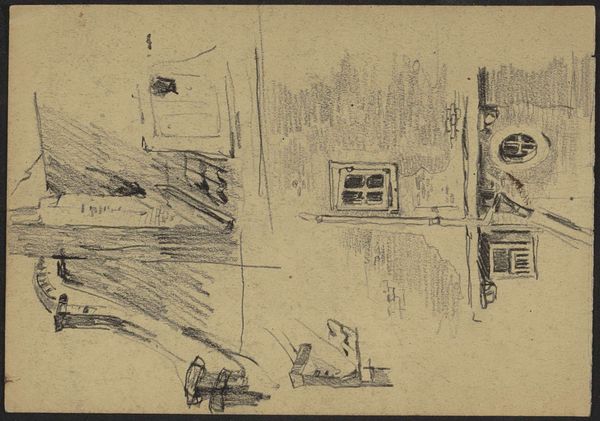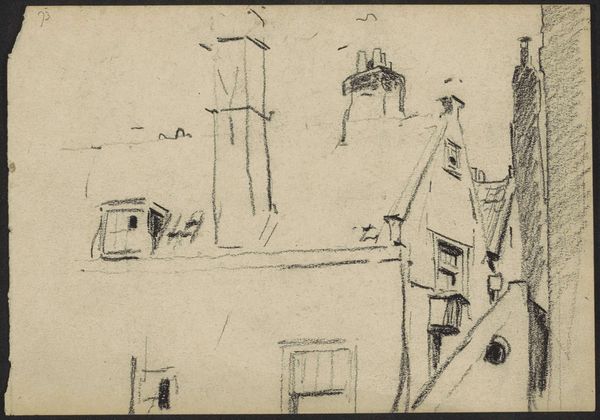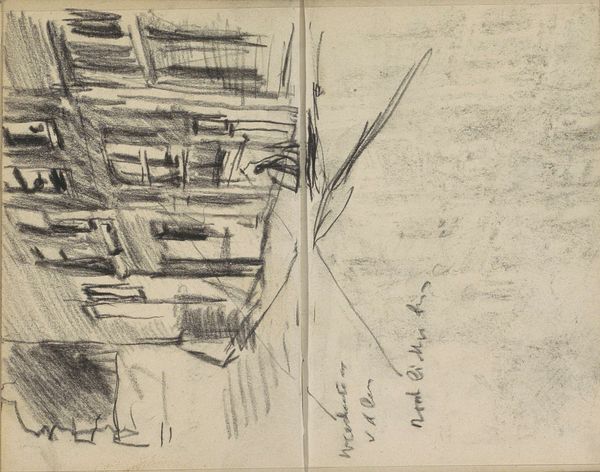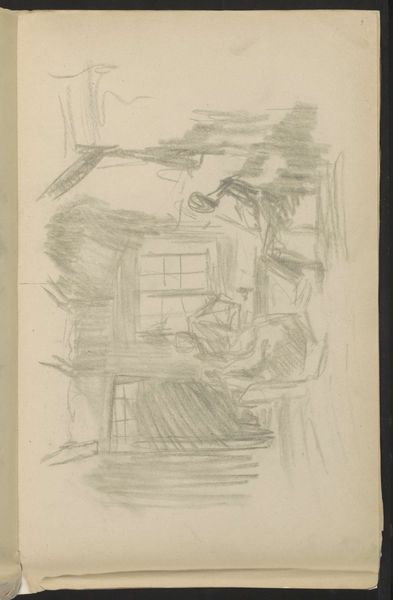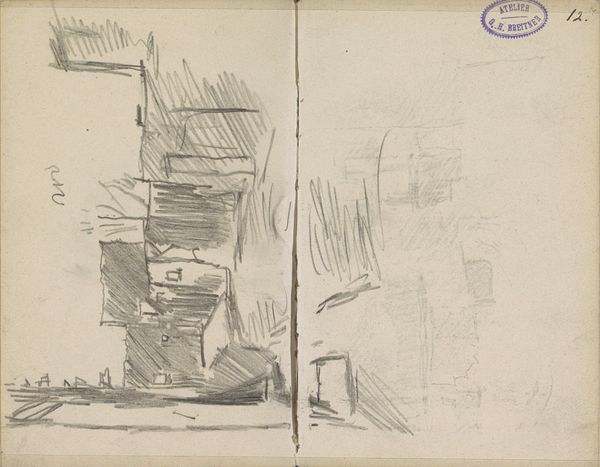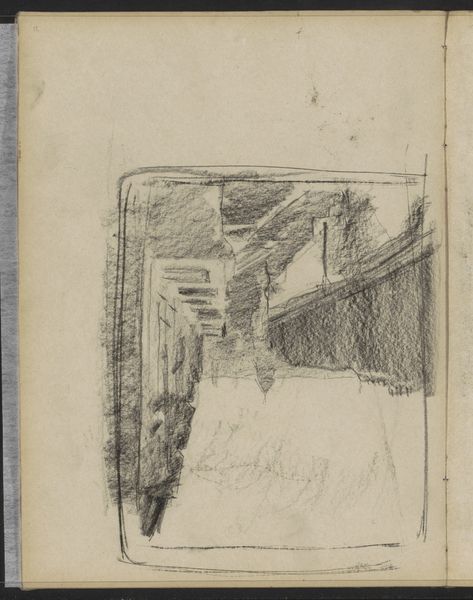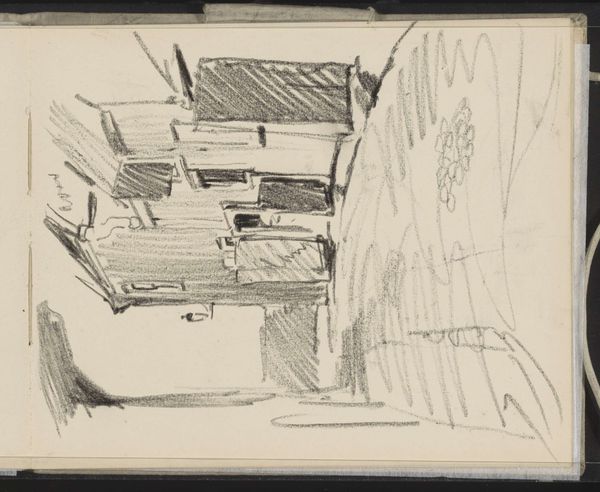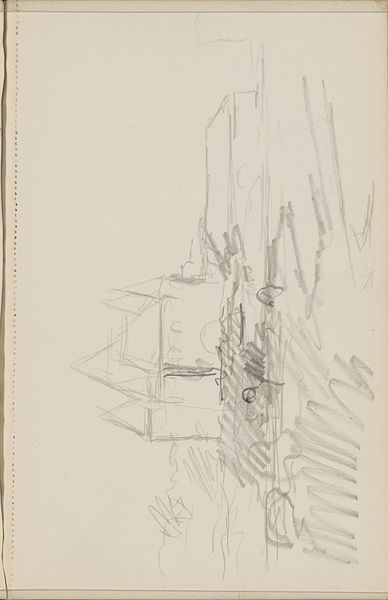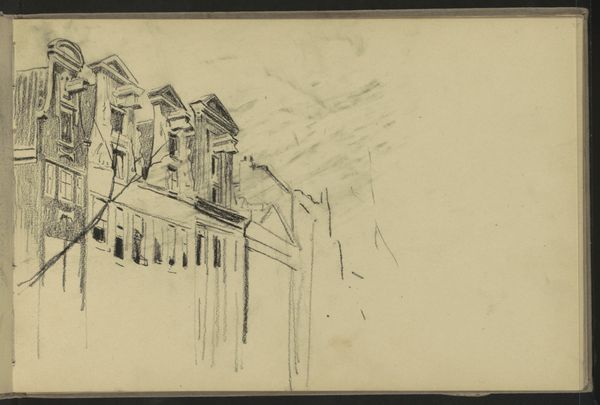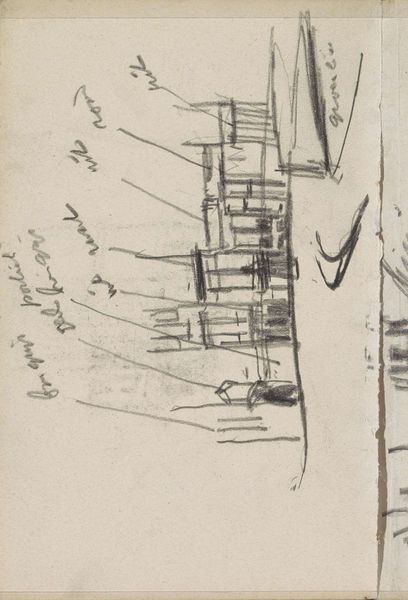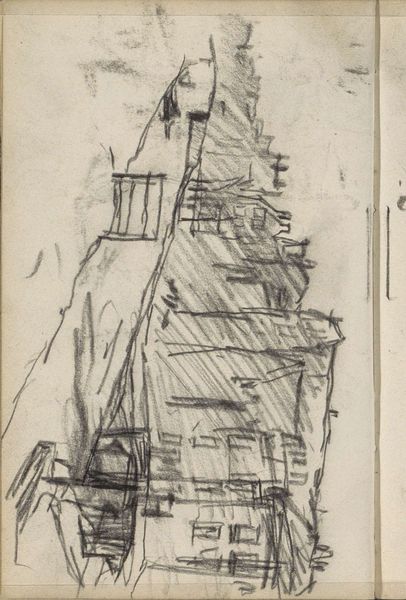
Achtergevels van de panden Korte Dijkstraat 2 en 4 in Amsterdam before 1909
0:00
0:00
willemwitsen
Rijksmuseum
Dimensions: height 139 mm, width 200 mm
Copyright: Rijks Museum: Open Domain
Editor: This pen drawing by Willem Witsen, titled "Achtergevels van de panden Korte Dijkstraat 2 en 4 in Amsterdam," dates from before 1909. The stark lines and close perspective create an interesting composition. It has a very intimate feeling to me, like catching a glimpse into a secret, hidden part of the city. What do you see in this piece? Curator: The drawing, precisely because of its sketch-like quality, becomes a record of time and memory. Witsen, working at the cusp of modernity, preserves an image of Amsterdam that is quickly vanishing. These rear facades, almost anonymously rendered, become symbols of domestic life and the hidden labor that sustains the city's vibrant front. Notice how the pen strokes don't just depict structure, but almost seem to breathe life into the aged wood and worn tiles. Do you get a sense of that quiet perseverance, the weight of history held within these walls? Editor: I see that now! It wasn't just a quick sketch, but a deliberate attempt to capture something that was fading. Like preserving a memory. I guess I was too focused on the visual roughness to appreciate what it signified. Curator: Precisely. Consider, too, how the "achtergevel" or back facade, isn't typically celebrated. Witsen draws our attention to what is normally unseen, suggesting a value in the ordinary and overlooked. He finds a certain dignity in the everyday lives lived within these aging structures. This area wasn't for show; it was for practical labour. Editor: So the symbols of labour are almost as much about what's not visible on the surface of Dutch life? Curator: Indeed, it invites us to ponder the city's layers of meaning and memory. We're left considering not just what we see, but what is felt and remembered. Editor: That really changes my view of it. Thanks! I won't just pass by a building’s backside so quickly again. Curator: It’s a lovely example of how art encourages us to observe and consider things differently. The simple act of looking with intent makes the invisible visible.
Comments
No comments
Be the first to comment and join the conversation on the ultimate creative platform.
